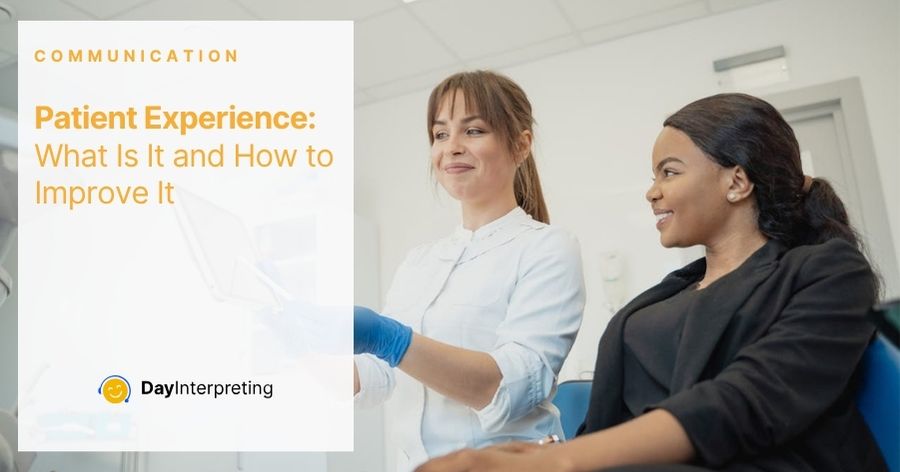Having an injury or coming down with the flu is already bad enough. Facing doctors and nurses who aren’t paying enough attention to an injured or sick patient can be a horrible experience that makes this person feel even worse. That’s why the matter of positive patient experience has become so important. Both medical institutions and medical staff have been working on improving this segment in the last few decades. But what exactly does patient experience refer to, and how can it be improved?
What Is Patient Experience?
Patient experience refers to the scope of activities and exchanges between a patient and the healthcare system. Doctors, nurses, paramedics, and all other staff members are the representatives of this healthcare system. Their duty is to ensure that patients are treated with proper care and attention.
What’s more, patient experience also includes health plans and different procedures a patient goes through, from proper access to relevant medical data, their health records, and adequately scheduled and executed appointments. Finally, pleasant and open communication is another important factor for patient satisfaction.
How to Improve Patient Experience?
Many health professionals have been wondering how to improve patient experience in healthcare. As a matter of fact, things look much better than they did two or three decades ago.
One part of this progress lies in the technological advancements we’ve all witnessed in that period. The medical instruments that medical institutions, health centres, and medical staff have at their disposal are beyond comparison with their counterparts of the past. However, it’s only one of the drivers of the enhanced patient experience.
Now the patient is in the middle of medical procedures. Patient satisfaction is measured through various factors, so that medical treatments, therapy, surgeries, and any other process are established and carried out in line with the information gathered in advance. This is where the patient experience survey and other forms of feedback have a vital role. When you have a satisfied patient, it means you’ve met their expectations: they have received the right treatment to cure their illness or resolve their medical issue.
Why Is Patient Experience Important?
Patient experience is something that medical workers should have in mind throughout the entire medical treatment, from the moment a patient is admitted to the hospital until the minute they’ve been released. When the outcome of the treatment is positive from a physical point of view, and the patient feels satisfied with the manner in which they’ve been treated, patient experience is more likely to be positive, as well.
Patient satisfaction and positive experience are important for several reasons. The most obvious one is the patient’s well-being. An analysis published by The Harvard Business Review underlines that empathy needs to be one of the pillars of modern healthcare. That’s one of the answers to how to improve patient experience in hospitals: show your patients more care and empathy.
Also, hospitals and doctors who care about their patients’ feelings during the medical treatment and the recovery period typically get better feedback. This is important for their future patients – if a medical institution has an impeccable reputation, new patients are more likely to seek medical help there.
Communication Is the First Step to Better Patient Care
If we take proper medical care for granted – meaning that the patient has received everything they need from a strictly physical point of view – communication remains the key factor that sets apart the average from the outstanding in terms of patient experience.
Let’s compare two patients, say two Argentinians who don’t speak English very well, in two health centers somewhere in the US, with a similar issue: a hand injury after they fell off their bikes.
The first patient comes to the health center that has a medical interpreter; they’re able to communicate every step of the way – from the admission to X-ray scanning, to the treatment itself – in their language, so that there’s no uncertainty. They know what procedures the doctors will apply and what the desired outcome is.
The second patient comes to a hospital that doesn’t support medical interpreting, so the patient must use various translation apps, like Google Translate, to communicate with their doctors. This person might not know what’s going to happen next or how severe their injury is.
In the second case, patient experience will not be too positive, even if the injury is properly treated. Hence, the level of patient satisfaction will probably be pretty low.
These cases highlight the importance of multilingual communication in certain communities, in addition to excellent medical care and successfully established procedures. As a rule of thumb, medical institutions that operate in areas with a rich ethnic diversity should give their potential and current patients the choice of using a medical interpreter’s services. In some situations, this can be a crucial detail to treat the patient more successfully from day one.
Patient Experience: A Fast Track to Better Healthcare
In medical treatment, there are often no shortcuts. The patient, the doctor(s), and the therapy itself need to take their time to ensure proper healing. However, patient satisfaction can be a fast track to success. For the patient in question, the feeling of being treated like a human being can be healing. For the related medical institution, knowing how to improve patient experience can be a deal breaker – the more successful they are at every aspect of patient treatment, the more patients they will have.

Pavle has a decade and a half of linguistic experience, first as an ESL teacher, then as a translator and interpreter. In the last third of his career quest so far, he has turned to content marketing, as the most exciting branch of applied linguistics.
Having worked as a content specialist and editor while following the latest linguistic and tech trends, he has specialised in bringing the current affairs in the lingtech sector to the spotlight.
When he’s not crafting his briefs and drafts, and writing his stuff, he likes to pluck a chord or two on his old guitar, or just go to a pub quiz; a father of three, a husband of one.




0 Comments